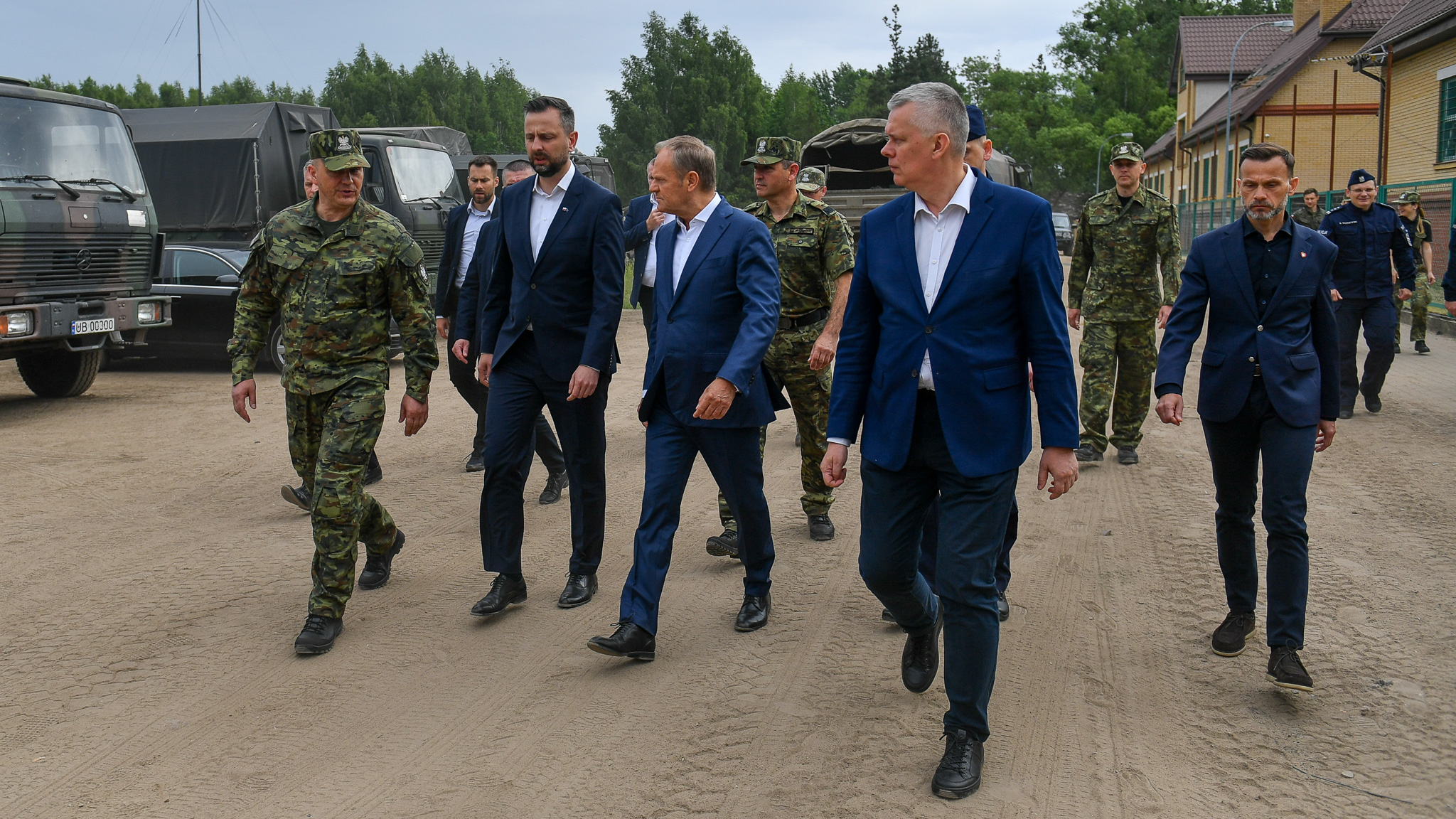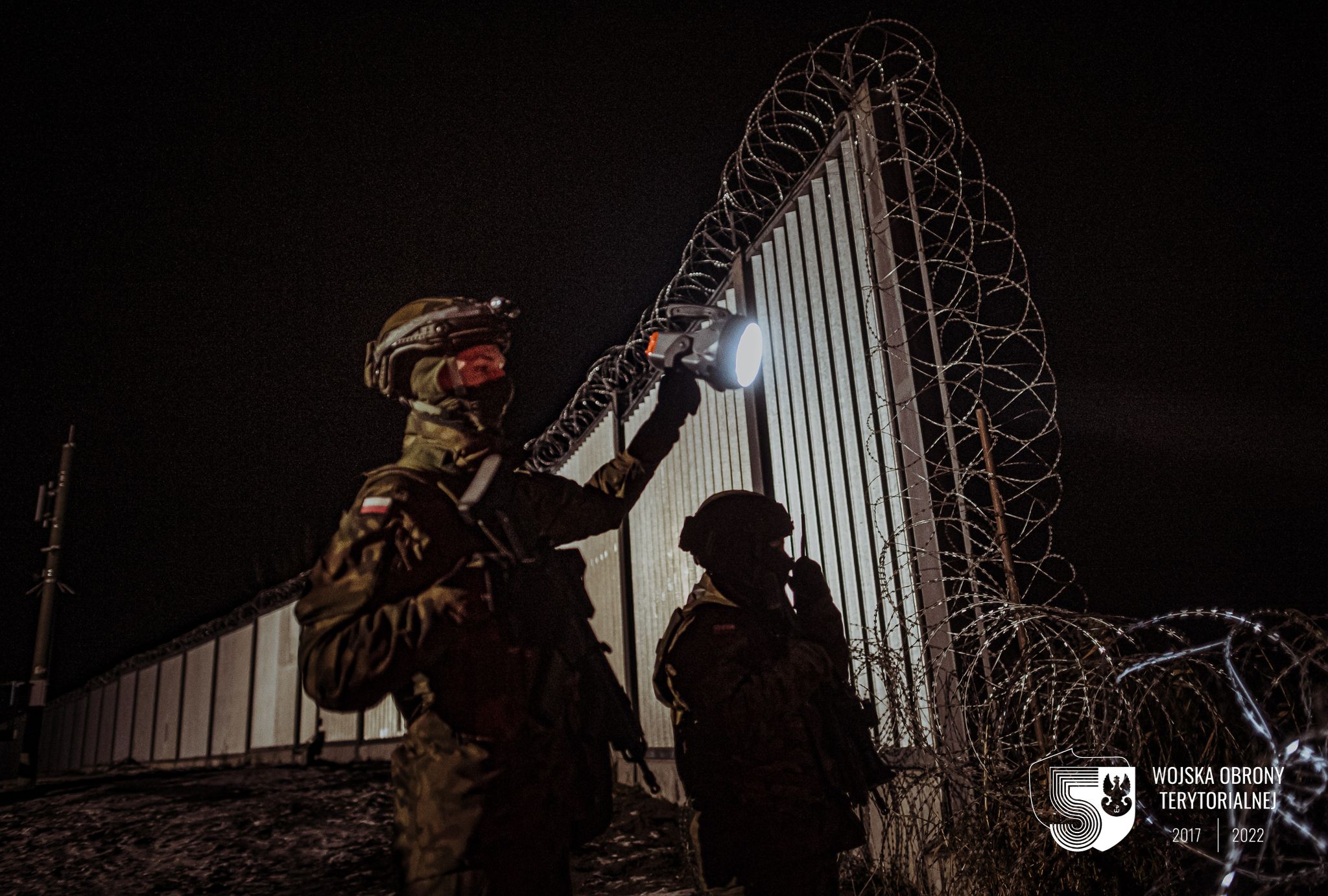On Tuesday, May 28, in Dubicze Cerkiewne, a migrant attempting to illegally cross the border injured a Polish soldier. The soldier, using a protective shield, prevented the group of migrants from forcibly and illegally crossing the border. However, during the intervention, one of the attackers stabbed him in the chest area with an improvised spear. He is currently in critical condition and fighting for his life. At the same time, two Border Guard officers were also injured.
 Photo: senior corporal Wojciech Król/CO MON
Photo: senior corporal Wojciech Król/CO MON
We can expect increased pressure on the Polish border because thousands of people are being gathered in Russia specifically to be transferred to the Polish-Belarusian border. We have no doubt that this action is purely aggressive. It is an instrumental use of people, often poor and paying for this. The aggression is growing. It started with throwing stones and tree branches, and now we are witnessing an escalation, said Tomasz Siemoniak, Minister of the Interior and Administration.
In just the days of May 27-28, the Border Guard recorded over 400 attempts to illegally cross the border. Throughout this time, migrants continuously threw stones at the patrols.
Atak cudzoziemców na polsko-białoruskiej granicy‼️ https://t.co/vmnESbftbm pic.twitter.com/OLtYUo8bUt
— Straż Graniczna (@Straz_Graniczna) May 28, 2024
Lack of adequate equipment
Since the beginning of the conflict, none of the decision-makers in the Ministry of Defense, the General Staff of the Polish Army, the General Command of the Armed Forces, or the Armed Forces Support Inspectorate have recognized that the equipment used by soldiers at the border is completely inadequate for their needs. Just as soldiers froze during the first winter without proper warm uniforms, they still lack appropriate protective gear.
The military is now effectively performing police duties, similar to the tasks of the Military Police units during missions in Bosnia and Herzegovina, or the Central African Republic. Unfortunately, they are not always trained for these tasks, nor do they have the equipment typically required for such operations.
The soldier was stabbed in the chest because he did not have a soft ballistic vest with an enlarged surface area, which protects against sharp objects. Soldiers and officers also do not have protective visors to shield their faces from flying stones, branches, and bottles.
The vehicles used by the patrols also do not provide adequate protection. Soldiers and officers move around in Honkers and Defenders. This is particularly strange given that the Military Police have appropriate vehicles – SILO Szop – which provide adequate protection during patrol tasks in less than friendly environments.
 Photo: Territorial Defense Force Command
Photo: Territorial Defense Force Command
Legal absurdities
It is still unclear on what legal basis the Armed Forces soldiers are guarding the border. The then Minister of National Defense, Mariusz Błaszczak, issued decision no. 39/MON on March 14, 2020, directing a military component to support the Border Guard. The next day, President Andrzej Duda confirmed Błaszczak’s decision, but no further thoughtful actions followed. The military was simply sent to the border, and that was it.
Legally, everything was in order until June, when Minister Błaszczak invalidated the previous decision and issued a new one, but this new decision was not countersigned by the President. Since then, soldiers have been at the border, but not as support for the Border Guard. On what legal basis is the military operating? It is unknown.
Additionally, soldiers do not have the right to use weapons even in cases of direct life-threatening situations. They are not a military law enforcement body, and as such, the use of firearms or direct coercion measures for defense could lead to prosecution and charges of exceeding their authority or limits of necessary defense. Such cases have already occurred at the Polish-Belarusian border, involving warning shots fired in Dubicze.
What’s next?
Politicians are currently only declaring their intention to take further action. Minister Siemoniak said, “On our part, there is a willingness to fully engage in solving specific legal, financial, and logistical problems so that the Polish border is safe.” He added that joint training sessions for the military, police, and Border Guard will finally take place.
Solutions at the Council of Ministers level have already been announced. The question is whether these solutions will actually help the soldiers in their service. Will they receive the appropriate equipment?
Legal solutions will have to wait for the next parliamentary sessions. Patching up legal gaps will likely take much longer, but without them, soldiers will still not be able to effectively protect the Polish border.



Comments
Nobody has commented on this article yet.